Pakistan’s toxic smog cover is now visible from space
Pakistan’s cities slip under toxic smog as live readings for Lahore show PM2.5 levels 100 times over what WHO prescribes
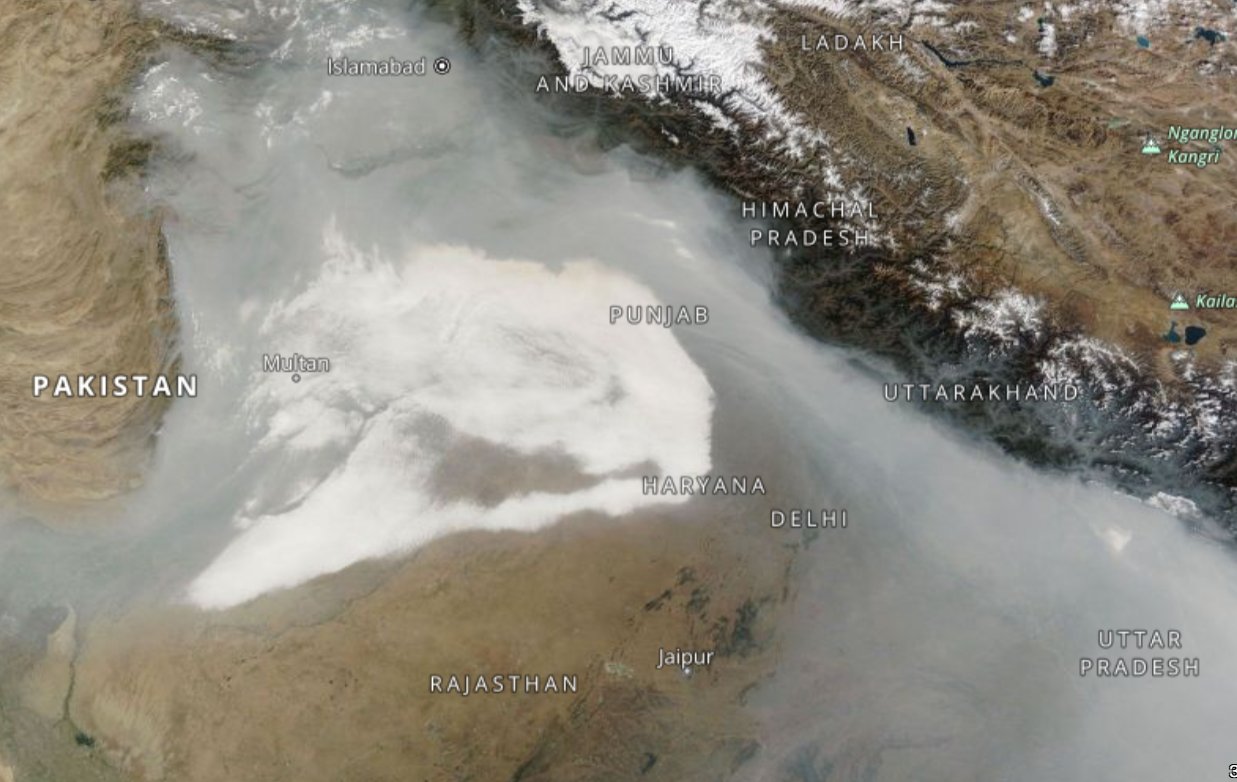
The thick and toxic smog hanging over Pakistan is visible from space, satellite imagery from Nasa confirmed, as record-breaking levels of air pollution continued to endanger millions.
Pakistan’s cultural capital Lahore and 17 other districts have been battling toxic smog for more than two weeks now, with the air quality index soaring past the 500 mark and indicating that conditions are “hazardous”. The city is the world’s most polluted in terms of air quality, according to Swiss group IQAir’s live ratings.
Satellite images captured by Nasa’s Worldview maps confirmed the grey haziness covering a massive swathe of land over Pakistan and extending southeast towards India’s New Delhi and Punjab.
According to Pakistan’s Environmental Protection Department in Punjab, Multan remained the most polluted city on Monday, with air quality index readings of about 800. Anything over 300 is considered hazardous to health.
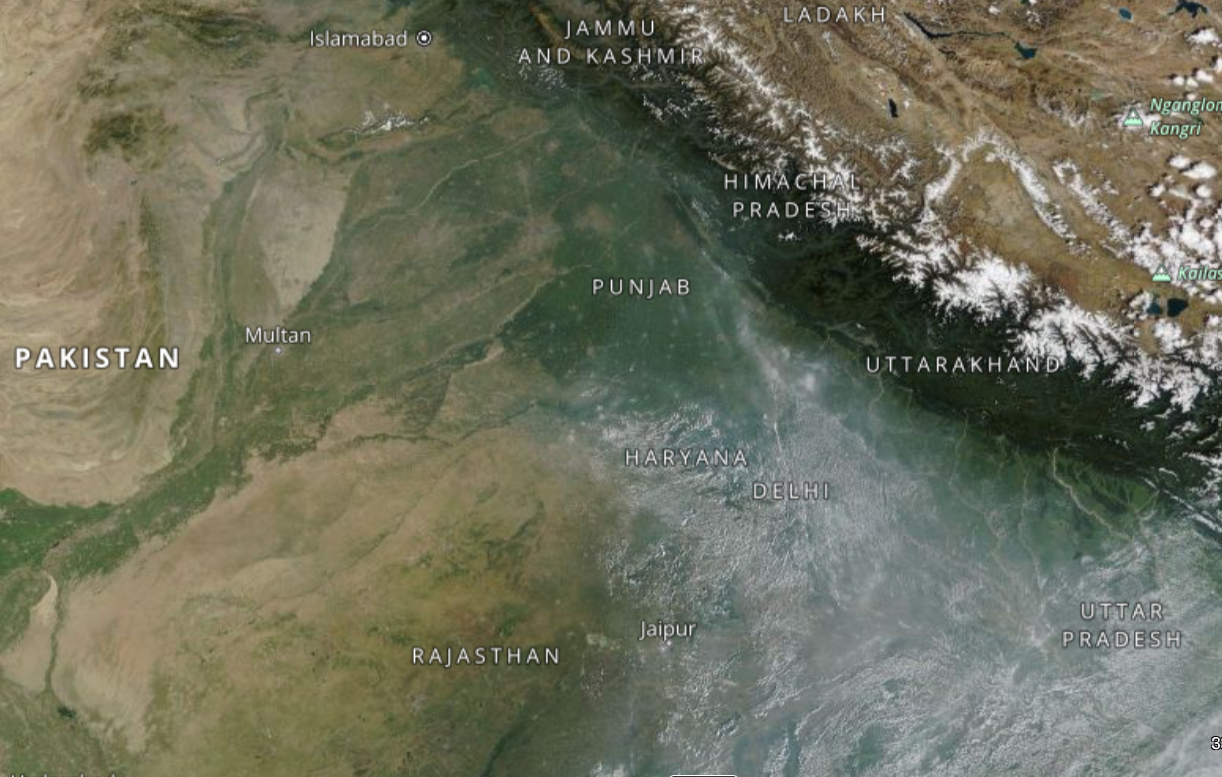

Live readings for Lahore showed that the city’s fine particulate air pollution, or PM2.5 concentration, was over 100 times the World Health Organisation’s annual air quality guideline, according to IQAir.
On Monday, Punjab province in Pakistan banned most outdoor activities, and ordered shops, markets and malls in some areas to close early in order to prevent illness. More than 40,000 people have been treated for respiratory ailments, health officials said.
“The spread of conjunctivitis/pink eye disease due to bacterial or viral infection, smoke, dust or chemical exposure is posing a serious and imminent threat to public health,” the Punjab government said.
People have complained of respiratory diseases, eye and throat irritation, and pink eye disease in the districts of Lahore, Multan, Faisalabad and Gujranwala, the Punjab government said.
The UN has warned that the health of 11 million children in Punjab is in danger from the toxic air.
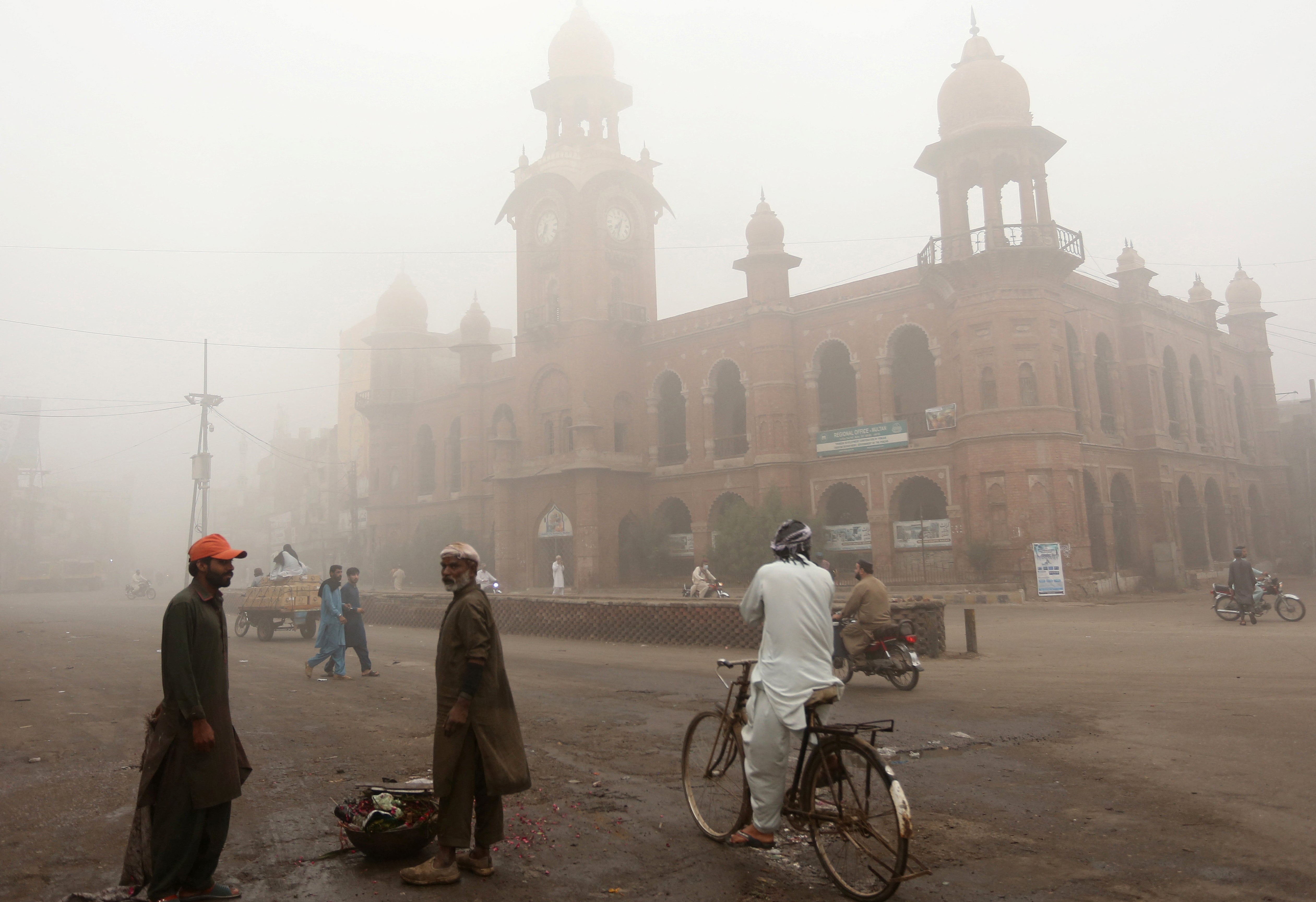
“Prior to these record-breaking levels of air pollution, about 12 per cent of deaths in children under five in Pakistan were due to air pollution,” said Abdullah Fadil, the Unicef representative in Pakistan.
“The impact of this year’s extraordinary smog will take time to assess, but we know that doubling and tripling the amount of pollution in the air will have devastating effects, particularly on children and pregnant women,” he said.
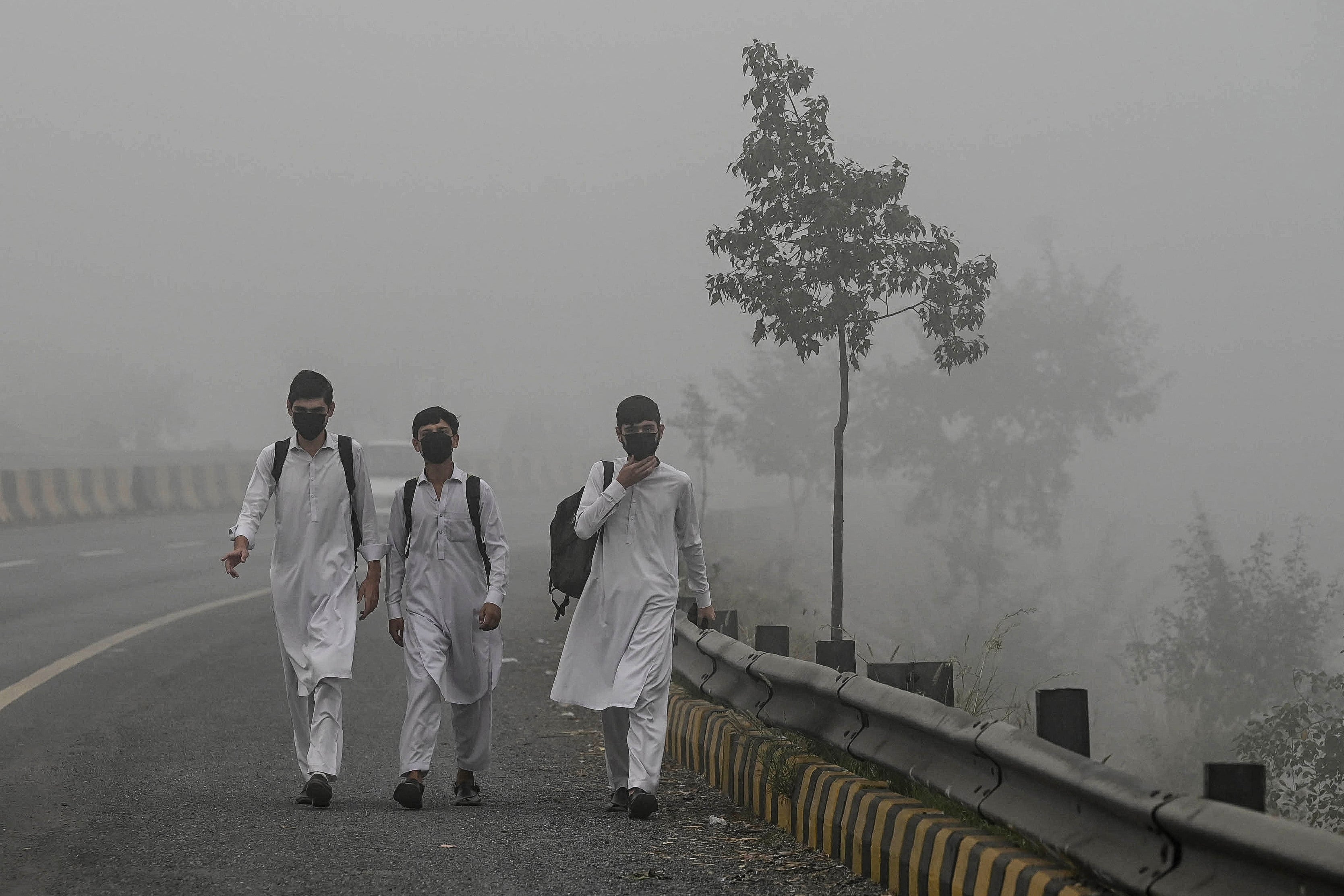
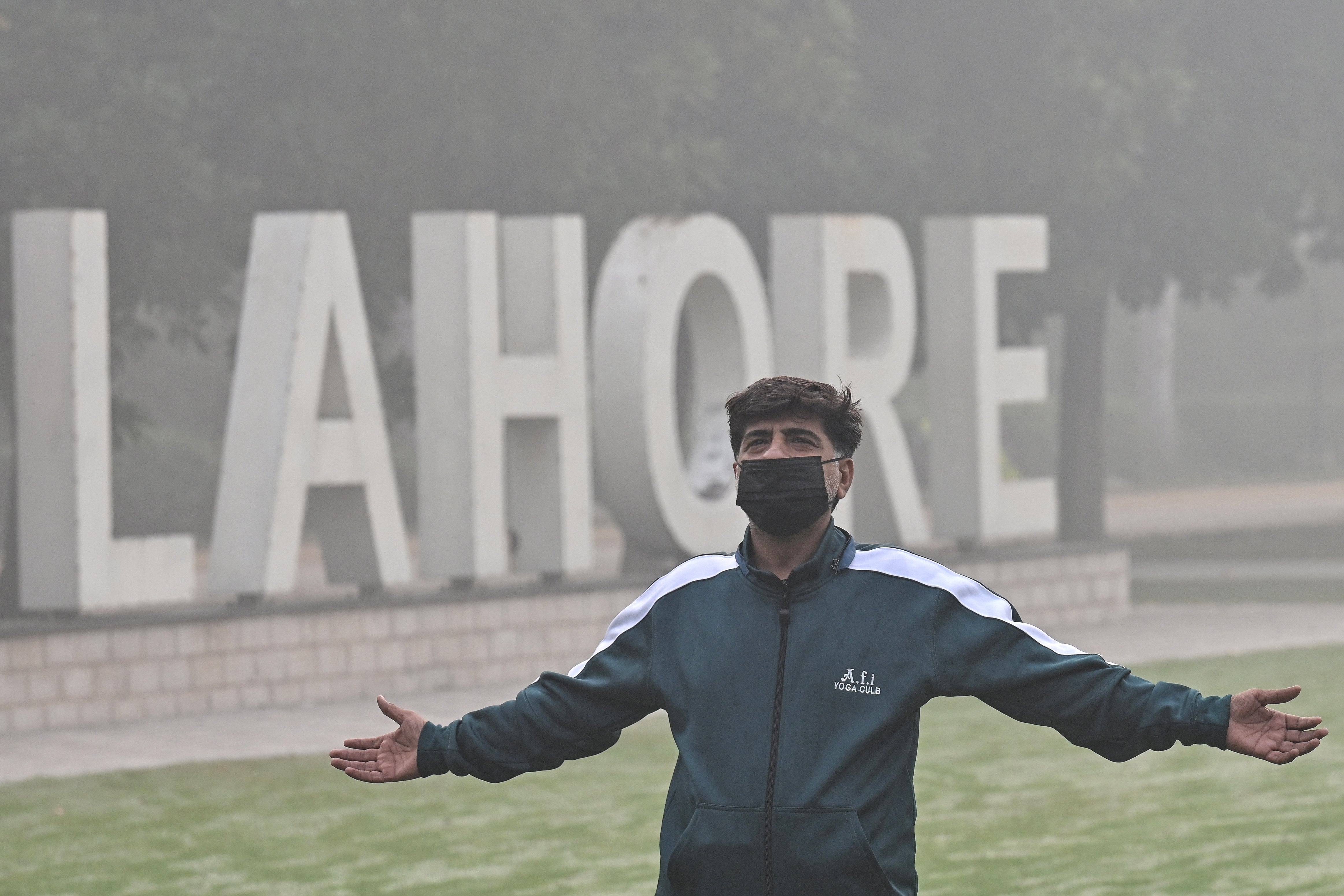
Schools have been ordered to remain shut until Sunday this week in parts of Punjab as authorities attempt to protect children’s health. Officials have also shut all parks and museums for 10 days and asked people to avoid unnecessary travel.
A group of air quality experts have written to Pakistan’s prime minister Shahbaz Sharif, asking him to take immediate steps to tackle the hazardous air quality by shutting down major sources of pollution. “Shut down all brick kilns, [implement] strict vehicle emission checks, and curtail heavy transport and shut down non-compliant industrial units,” the Pakistan Air Quality Experts (PAQx) group said in a letter seen by The Independent.
“A focused crackdown on vehicles that fail to meet emissions standards, and curtailing heavy transport from 10pm to 10am, would provide an immediate reduction in harmful pollutants in urban areas by a further 15 per cent,” the letter suggested.
Air quality experts in Pakistan have said that the current policies are more focused on green lockdown, where the authorities want to restrict the movement of people in a certain very small limited area of downtown Lahore, which is an old city and is densely populated with high traffic.
“But that does not work out well, as the enforcement was lax. Brick kilns and crop burning have been banned for many years, especially in the winter months. You can shut one, but another will burn a few kilometres away,” said Abid Omar, founder of the Pakistan Air Quality Initiative.
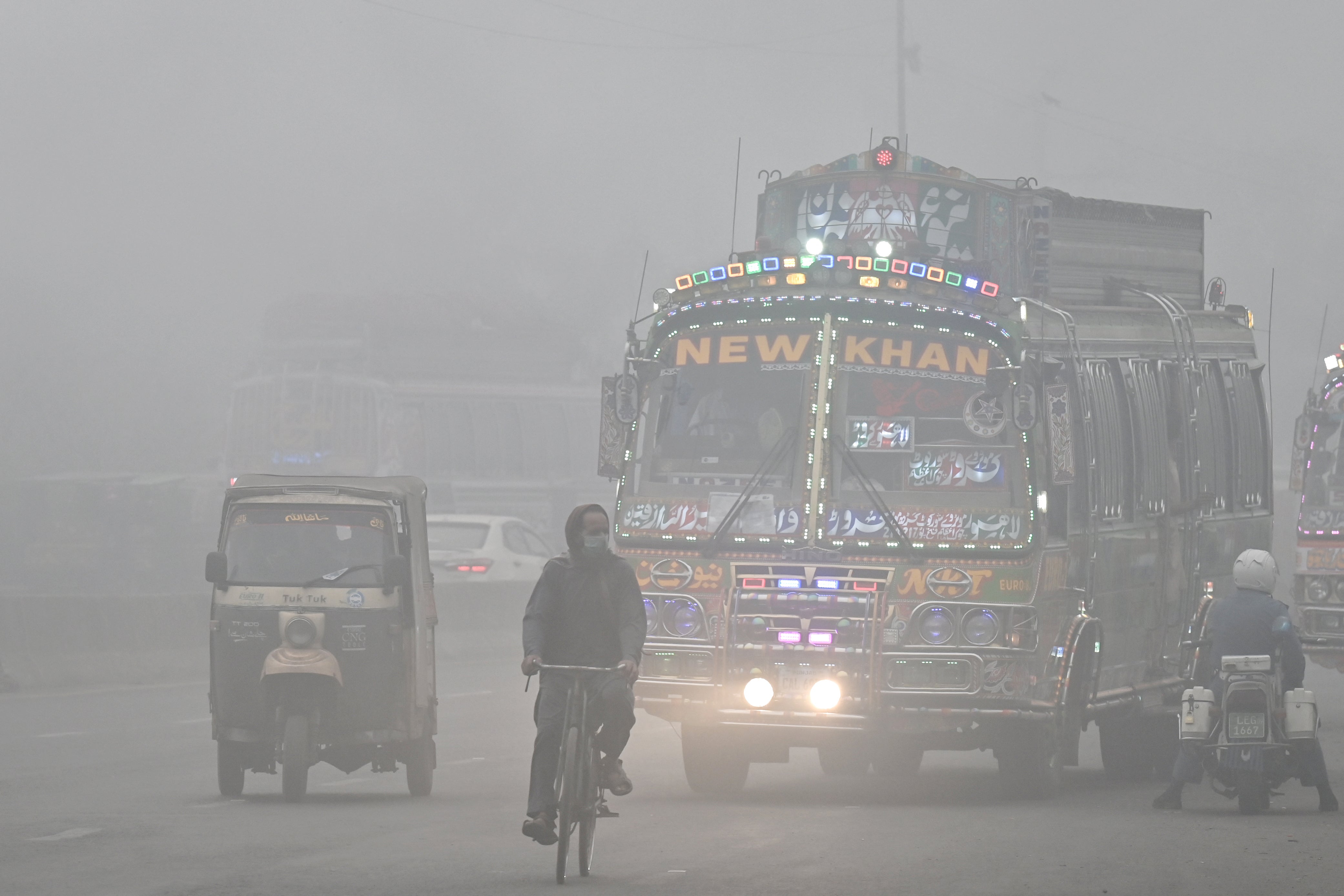
“All schools are shut down, and universities could be shut soon. There’s talk of a work-from-home policy, but this will not be effective alone. They need to take some very serious emergency measures, such as the three measures that we have outlined in this letter,” he told The Independent over the phone.
Mr Omar said that the implementation of each of these measures could reduce the problem by about 15 per cent, and even a 45 per cent reduction, if all three were introduced, would leave Pakistan’s cities with an AQI of 1,000, which is still hazardous. “But short-term measures like these are urgently required for saving millions,” he emphasised.
Join our commenting forum
Join thought-provoking conversations, follow other Independent readers and see their replies
Comments
Bookmark popover
Removed from bookmarks